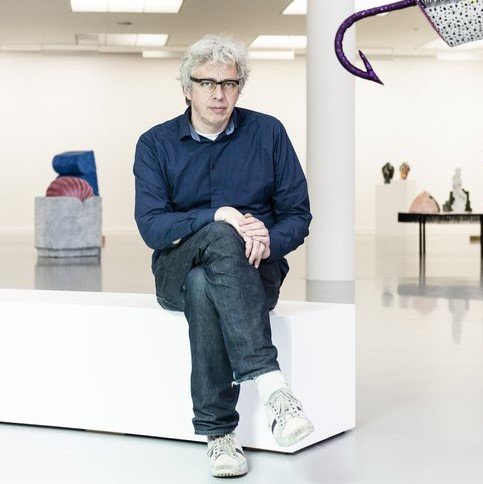Bart De Baere

Bart De Baere, Director, M HKA, Antwerp, Belgium
Years professionally involved in the contemporary art museum field: 35 years.
Have you served on another board or organization similar to CIMAM? CIMAM Board since 2017.
Short bio. Describe also your involvement with CIMAM and the museum community:
Bart De Baere has been Director of M HKA in Antwerp, the contemporary art museum of the Flemish Community in Belgium, since 2002.
Being a museum director means curating an institution, with curating or co-curating exhibitions as a side-effect, such as Moving a Mountain by Faith, 2022, the reopening exhibition of the PinchukArtCenter in Kyiv; the opening exhibition of EMST, the Greek National Museum of Contemporary Art in Athens, 2017; the 6th Moscow Biennial, at the VDNKH, 2015; Five Centuries of Images in Antwerp, 2011, the opening exhibition of MAS, Museum Aan de Stroom, Antwerp; A Story of the Image, 2009, at Shanghai Art Museum and National Museum of Singapore.
Prior to that, in 1986–2001, he worked in the Museum of Contemporary Art in Ghent, curating numerous exhibitions there such as This is the show and the show is many things, 1994, and in various venues internationally, such as: Europe, a project for Universalis, 1998, with Maaretta Jaukkuri, for the São Paulo Biennial, Brazil; Ivan Kozaric, 1996, at Mala Galerija, Ljubljana, Slovenia; Jimmie Durham, David Hammons, Pedro Cabrita Reis, 1993, Kunsthalle Fribourg, Switzerland. He was a member of the curatorial team for Documenta IX in 1992.
He was president of the Flemish Council for Culture, 2003–8; advisor to the Flemish Minister of Culture, 1999–2001; president of the Flemish Council for Museums and of the Assessment Board for Museums, 1997–99, implementing the first national museum legislation.
He is a co-founder of the European museum confederation L’Internationale, 2012; he is a co-founder of Wiels, Brussels, 2002–5; he has been a member of the International Advisory Board of the Soros Centers for Contemporary Art, New York, USA, 1996–99; advisor of the Department of Culture of the City of Johannesburg for the launching of a biennial in Johannesburg, Johannesburg, South Africa, 1992–95.
He is a board member of CIMAM and chair of its Museum Watch Committee, launching research into museum governance with INTERCOM, the ICOM committee for museum management.
Motivation Statement: How can you contribute to CIMAM's mission and strategic goals by being a Member of the Board? (i.e strategy, membership, fundraising, governance, network in strategic regions, availability, knowledge or skills in a specific area):
Being a board member now already, to start during this possible third term I might be part of the CIMAM board memory. Furthermore, my contribution may be in different capacities, because of the wide spectrum of experiences I can offer. These are diverse both in terms of geography, types of institutions, and of roles, I took upon myself in the past.
In terms of geography, I have been and continue to be committed to institutional developments in very different areas in the world, both in high-end situations and in accompanying the development of institutions from scratch. The" institutions I have been involved in were both private and state-initiated.
In terms of roles, I have not only taken up diverse curatorial, directorial, and board positions in different visual art institutions but have also been involved in writing and implementing legislation, and have been part of - and chairing - different policy-preparing councils.
Describe briefly the expectations of your involvement as a CIMAM Board member and how you envision CIMAM's priorities in the next years:
It seems urgent to me that CIMAM reflects on the specific status of contemporary art museums. They are contemporary art institutions rather than museums in the traditional sense. They are grounded in a cultural heritage base yet not limited to traditional museum functions. They always rethink themselves because of the challenges posed by artists and by developments in society. Because of this, their role within society is agonistic. They don't present a consensus but a dissensus.
This specificity ought to be highlighted and safeguarded to guarantee their ongoing relevance.